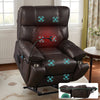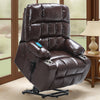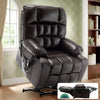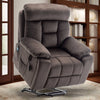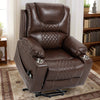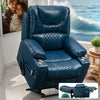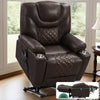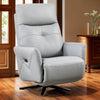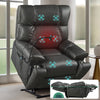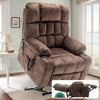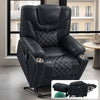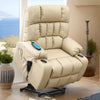The Impact of Heated Massage Chairs on Workplace Well-being
The Science Behind Heated Massage: Benefits and Drawbacks
Heated massage chairs combine warmth and pressure to relax muscles and improve circulation. The heat helps loosen tight muscles, while massage reduces tension and stress. This combo can ease pain and boost mood. Studies show heated massage may lower blood pressure and improve sleep quality.
However, there are potential drawbacks to consider. Some people may find the heat too intense or experience skin irritation. Prolonged use could lead to muscle soreness. It's crucial to use these chairs in moderation and follow manufacturer guidelines.
Overall, the benefits often outweigh the risks when used properly. Always consult a doctor if you have health concerns before using a heated massage chair regularly at work.
How Heated Massage Chairs Can Reduce Worker Fatigue and Increase Efficiency
Heated massage chairs can be a game-changer in the workplace. They help combat fatigue by improving blood flow and reducing muscle tension. This can lead to increased alertness and focus during long work hours.
Regular use of these chairs may result in fewer breaks needed for stretching or rest. Workers report feeling more energized and productive after short massage sessions. The heat element adds extra comfort, especially in cooler office environments.
By reducing physical discomfort, employees can concentrate better on tasks. This improved focus can lead to higher quality work and faster completion times. Companies may see a boost in overall efficiency and output as a result.
Best Practices for Incorporating Heated Massage into the Work Environment
To maximize the benefits of heated massage chairs, follow these best practices:
- Set up a schedule for chair use to ensure fair access for all employees.
- Place chairs in quiet areas to create a relaxing atmosphere.
- Provide brief training on proper use and safety guidelines.
- Encourage short, frequent sessions rather than long periods of use.
- Allow flexibility for employees to use chairs when needed most.
It's important to create a culture that values well-being. Make it clear that using the massage chairs is encouraged, not seen as slacking off. Consider having managers lead by example in using the chairs.
Regularly gather feedback from employees about their experience with the chairs. Use this input to make improvements and adjustments as needed.
Evaluating the Cost and ROI of Heated Massage Chairs for Businesses
Analyzing the Investment: Upfront Costs vs. Long-Term Savings
Investing in heated massage office chairs requires careful consideration of costs and benefits. The upfront expense can be significant, with prices ranging from $500 to $3000 per chair. However, the long-term savings can justify this initial investment.

Consider the potential reduction in healthcare costs. Employees using these chairs may experience fewer work-related injuries and less chronic pain. This could lead to lower insurance premiums and fewer sick days taken.
There's also the benefit of increased productivity to factor in. If employees are more comfortable and focused, they may complete tasks faster and with fewer errors. Over time, this improved efficiency can translate to substantial financial gains for the company.
Impact on Employee Productivity and Retention Rates
Heated massage chairs can have a positive impact on both productivity and employee retention. Workers who feel their well-being is valued are often more engaged and loyal to their company.
Productivity may increase as employees experience less physical discomfort and stress. The chairs can provide quick relief during the workday, allowing staff to refocus on tasks more easily.
In terms of retention, offering such a unique perk can set a company apart from competitors. It shows a commitment to employee comfort and health. This can lead to higher job satisfaction and lower turnover rates.
Lower turnover means reduced costs associated with hiring and training new employees. It also helps maintain a more experienced and efficient workforce.
Case Studies: Success Stories of Heated Massage Implementations
Several companies have reported positive outcomes after introducing heated massage chairs:
- Tech Startup X: Saw a 15% increase in productivity after adding chairs to their office.
- Law Firm Y: Reported a 20% decrease in sick days taken over a one-year period.
- Marketing Agency Z: Experienced a 10% improvement in employee retention rates.
One mid-sized accounting firm found that their investment paid off within 18 months. They cited improved morale and fewer complaints about back pain as key factors.
A large call center noted a decrease in average call handling times after implementing a chair-sharing program. Employees reported feeling more focused and less stressed during their shifts.
These case studies highlight the potential for significant returns on investment in heated massage chairs.
Strategies for Selecting and Maintaining Heated Massage Office Chairs
Identifying Key Features to Look for in a Heated Massage Chair
When choosing heated massage chairs for your office, consider these key features:
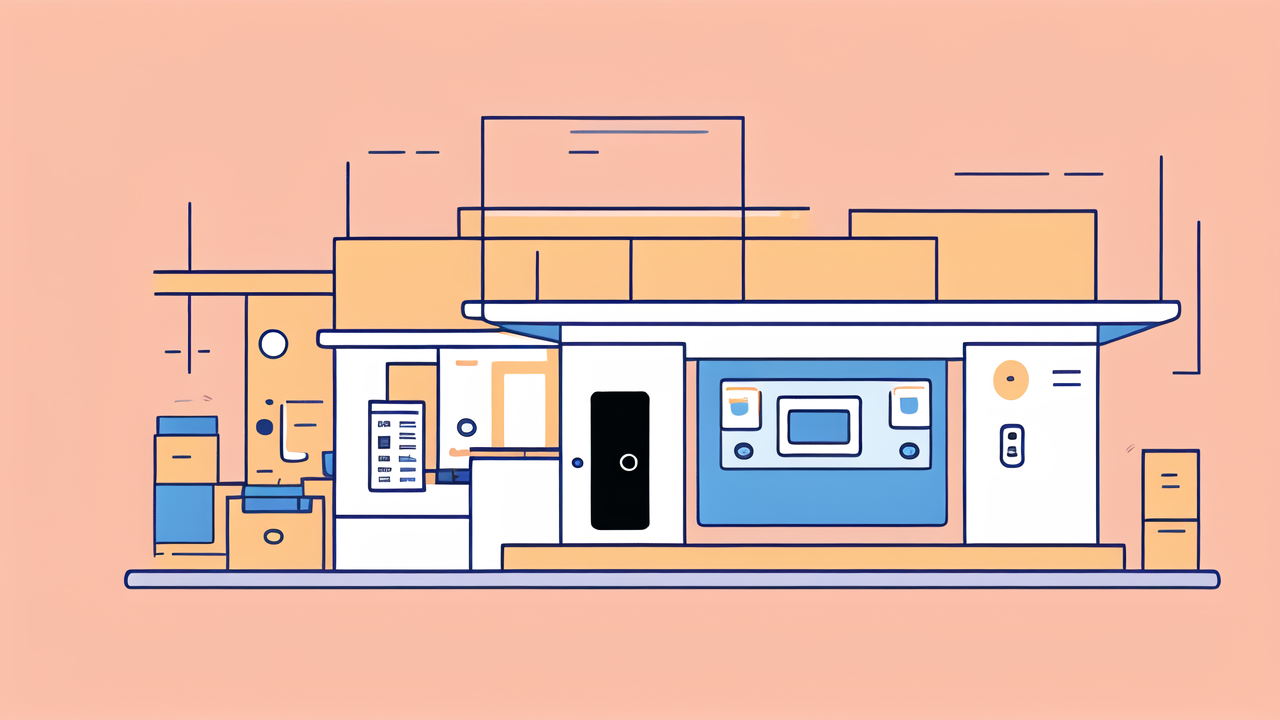
- Adjustable heat settings for personalized comfort
- Multiple massage modes (e.g., kneading, rolling, tapping)
- Customizable intensity levels
- Good lumbar support
- Durable, easy-to-clean materials
- Quiet operation to avoid disturbing others
- User-friendly controls
- Safety features like auto-shutoff timers
Look for chairs that offer a balance of comfort and functionality. They should be able to accommodate various body types and preferences. Ergonomic design is crucial for promoting good posture during extended use.
It's also worth considering chairs with memory functions. These allow users to save their preferred settings, making it easier to get consistent results each time.
Best Practices for Maintenance and User Satisfaction
To ensure longevity and user satisfaction with heated massage office chairs, follow these practices:
- Establish a regular cleaning schedule to maintain hygiene.
- Perform routine checks on electrical components and massage mechanisms.
- Provide clear instructions on proper use and care to all employees.
- Set up a system for reporting any issues or malfunctions promptly.
- Consider professional servicing annually or as recommended by the manufacturer.
Encourage users to report any discomfort or concerns immediately. This helps prevent minor issues from becoming major problems. It also shows that you value employee feedback and well-being.
Regularly update usage guidelines based on employee input and observed patterns. This helps ensure that the chairs continue to meet the evolving needs of your workforce.
Adapting Heated Massage Chairs for Different Body Types and Worker Needs
To accommodate diverse body types and individual needs, consider these strategies:
- Choose chairs with wide adjustability ranges for height, width, and depth.
- Offer additional accessories like lumbar cushions or neck supports.
- Provide training on how to adjust settings for personal comfort.
- Consider having a mix of different chair models to suit various preferences.
- Allow for personal customization within safety limits.
Remember that one size doesn't fit all when it comes to comfort. Some employees may prefer more intense massages, while others need gentler settings. Flexibility is key to ensuring everyone can benefit from the chairs.
For workers with specific health concerns, consult with occupational health professionals. They can provide guidance on safe and effective use of heated massage chairs in these cases.
By taking these factors into account, you can create a more inclusive and beneficial heated massage chair program for your entire workforce.








